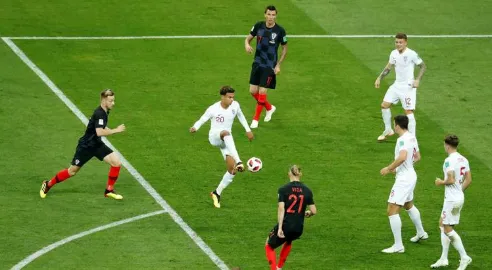Football, the world’s most popular sport, boasts a rich history that spans centuries and continents. It has evolved from ancient games to become a global phenomenon that unites millions. Whether you’re watching it live or streaming it online, xoilactv TV have brought the excitement closer to fans worldwide. Let’s take a journey through the origins, evolution, and modern-day glory of this beloved game.
Ancient Beginnings
The roots of football can be traced back to ancient civilizations. Games resembling football were played in China during the Han Dynasty (206 BCE – 220 CE), where a sport called “Cuju” involved kicking a leather ball into a net. Similarly, the Greeks and Romans played ball games such as “Episkyros” and “Harpastum,” which had elements of teamwork and strategy.
In medieval Europe, various forms of mob football were played in towns and villages. These games were chaotic, with few rules and no standardized field. The objective was simple—to move the ball to a target area by any means necessary. Despite its lack of structure, these early games laid the groundwork for the organized sport we know today.
The Birth of Modern Football
The transformation of football into a structured sport began in England during the 19th century. Public schools played a significant role in standardizing the rules. Institutions like Eton and Rugby developed their own versions of the game, leading to the creation of two distinct sports: association football (soccer) and rugby football.
In 1863, the Football Association (FA) was established in England, and the first official set of rules for association football was codified. This marked a significant moment in football history, as it separated soccer from rugby and introduced standardized regulations such as the prohibition of using hands to touch the ball (except for goalkeepers).
Football’s Global Expansion
As the British Empire expanded, so did football. British sailors, soldiers, and traders introduced the game to different parts of the world. By the late 19th century, football had gained popularity in countries like Brazil, Argentina, and Spain, where it quickly became a cultural phenomenon.
The formation of FIFA (Fédération Internationale de Football Association) in 1904 further boosted the sport’s international appeal. FIFA’s establishment paved the way for the first World Cup in 1930, hosted by Uruguay. The tournament showcased football’s ability to bring nations together, setting the stage for its future as a global event.

The Evolution of Tactics and Skills
Over the years, football has witnessed significant tactical and technical evolution. Early matches were often dominated by individual dribbling, but the advent of passing transformed the game into a team-oriented sport. Tactical systems such as the WM formation in the 1920s and the Total Football concept of the 1970s revolutionized how the game was played.
Players like Pelé, Diego Maradona, and Johan Cruyff not only mesmerized audiences with their skills but also inspired new generations. Modern icons such as Lionel Messi and Cristiano Ronaldo have continued this legacy, showcasing unprecedented levels of athleticism and creativity.
The Role of Technology
Technology has profoundly impacted football in recent decades. From the introduction of VAR (Video Assistant Referee) to advanced analytics, technology has enhanced decision-making and performance analysis. xoilactv TV leverage cutting-edge streaming technology to bring live matches to fans, ensuring they never miss a moment of the action.
Additionally, wearable devices and GPS tracking have enabled teams to monitor player fitness and optimize training. Innovations such as goal-line technology have eliminated controversies and improved fairness in the game.
Women’s Football
Women’s football has also grown significantly in popularity and recognition. Although women played football as early as the late 19th century, the sport faced significant challenges, including bans and societal stigma. However, the formation of organizations such as the Women’s Football Association (WFA) in the 1960s and the establishment of the FIFA Women’s World Cup in 1991 marked turning points.
Today, women’s football enjoys increasing visibility and investment. Iconic players like Marta, Megan Rapinoe, and Lucy Bronze have become household names, inspiring young girls worldwide to pursue the sport.
Football and Culture
Football is more than just a sport; it is a cultural phenomenon. It has the power to transcend social, economic, and political boundaries. Major tournaments like the World Cup and UEFA Champions League are not only sporting events but also cultural celebrations that unite diverse communities.
Football’s influence extends to music, film, and fashion. From anthems like “Three Lions” to movies such as Bend It Like Beckham, the sport’s cultural impact is undeniable. Even in the digital age, football continues to shape trends and inspire creativity.

The Future of Football
As football moves forward, it faces new challenges and opportunities. The sport’s governing bodies must address issues such as financial disparities, corruption, and environmental sustainability. However, initiatives like grassroots programs and technological advancements promise a bright future.
The rise of eSports and virtual football leagues also demonstrates how the game is adapting to modern audiences. With continued innovation and investment, football is set to remain the world’s favorite sport for generations to come.
Conclusion
Football’s journey from ancient ball games to a modern global spectacle is a testament to its universal appeal. Its evolution reflects the resilience and creativity of its players and fans alike. As bóng đá xôi lạc continue to revolutionize how we experience the game, football remains a symbol of passion and unity. Whether on the pitch or through a screen, its magic endures, inspiring millions around the globe.

